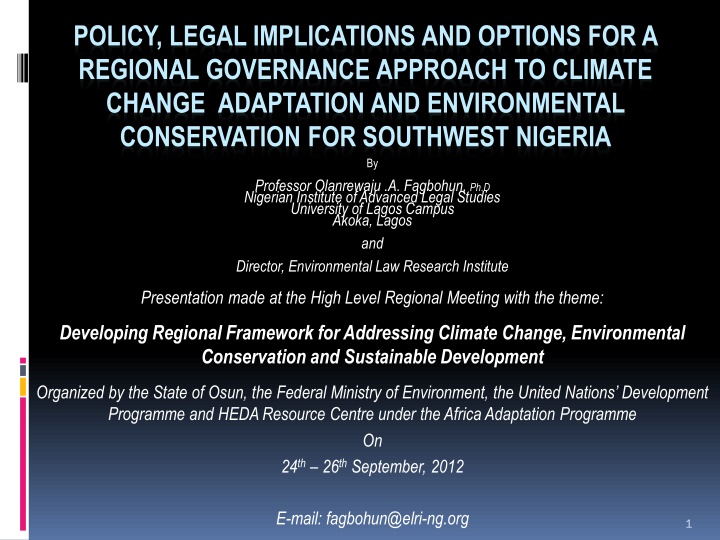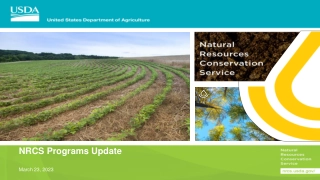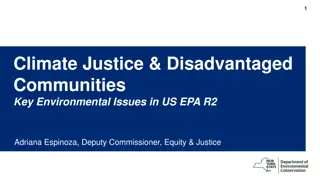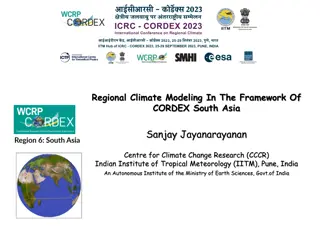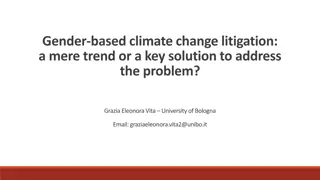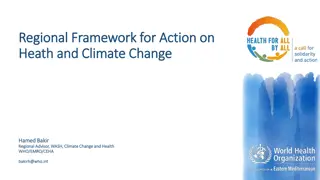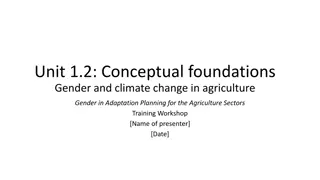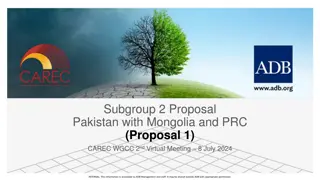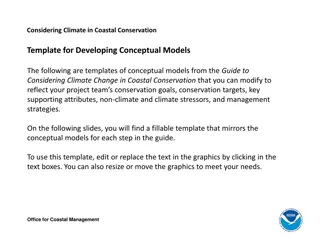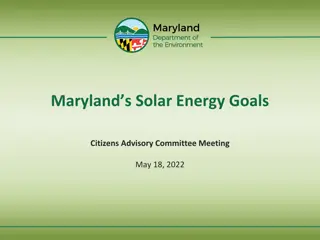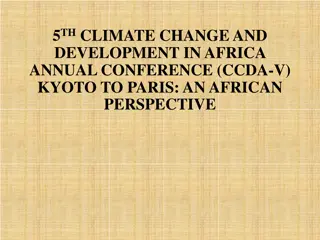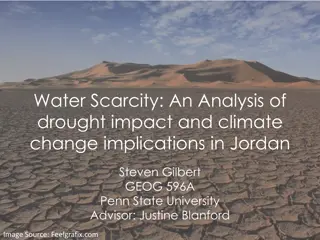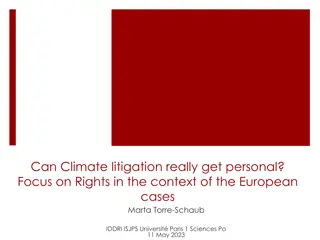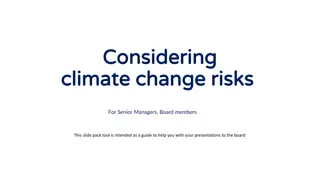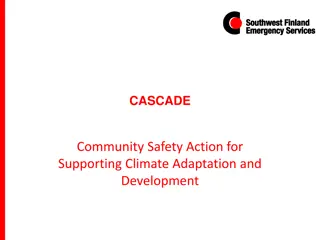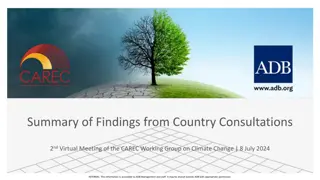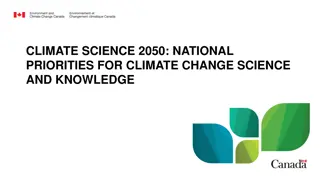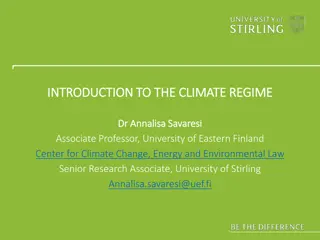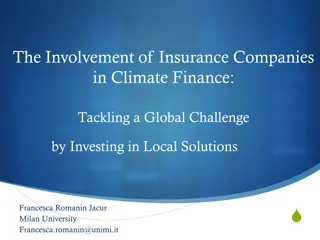Regional Governance Approach to Climate Change and Environmental Conservation
Exploring policy implications and legal options for regional governance in addressing climate change and environmental conservation in Southwest Nigeria. Emphasis on coordinated efforts, diverse stakeholder perspectives, and necessary initiatives aligned with national frameworks.
Uploaded on Mar 14, 2025 | 0 Views
Download Presentation

Please find below an Image/Link to download the presentation.
The content on the website is provided AS IS for your information and personal use only. It may not be sold, licensed, or shared on other websites without obtaining consent from the author.If you encounter any issues during the download, it is possible that the publisher has removed the file from their server.
You are allowed to download the files provided on this website for personal or commercial use, subject to the condition that they are used lawfully. All files are the property of their respective owners.
The content on the website is provided AS IS for your information and personal use only. It may not be sold, licensed, or shared on other websites without obtaining consent from the author.
E N D
Presentation Transcript
POLICY, LEGAL IMPLICATIONS AND OPTIONS FOR A REGIONAL GOVERNANCE APPROACH TO CLIMATE CHANGE ADAPTATION AND ENVIRONMENTAL CONSERVATION FOR SOUTHWEST NIGERIA By Professor Olanrewaju .A. Fagbohun, Ph.D Nigerian Institute of Advanced Legal Studies University of Lagos Campus Akoka, Lagos and Director, Environmental Law Research Institute Presentation made at the High Level Regional Meeting with the theme: Developing Regional Framework for Addressing Climate Change, Environmental Conservation and Sustainable Development Organized by the State of Osun, the Federal Ministry of Environment, the United Nations Development Programme and HEDA Resource Centre under the Africa Adaptation Programme On 24th 26thSeptember, 2012 E-mail: fagbohun@elri-ng.org 1
Thesis of Presentation Climate change is one of the defining and most challenging global issues of the twenty-first century. It is one of the key determinants of humankind s well-being and prosperity; Climate change may impact regional stability, causing tensions and conflict between states competing for diminishing natural resources; Climate change governance requires a coordinated approach at various levels: Successful regional and local implementation of national climate policy goals will require systematic efforts to align incentives across sectoral and cross-sectoral policy areas; Necessary initiatives must be aligned and not decoupled from national policy frameworks. 2
Core Characteristics of Climate Change Climate change considerations is not alligned to administrative/national boundaries. Its trans-boundary nature therefore underscored the necessity for regional cooperation in addressing the issues arising ; The result of diversity of stakeholders (government stakeholders) is multiplicity of different perspectives and interests: government, , private private and civil civil societal societal No one adequate form of governance; Not just one ideological programme or one ideal policy; Variety of approaches and solutions needed can constrain the option for action, impede consensus and lead to suboptimal outcomes of negotiations. Long-term nature of impacts requires intergenerational thinking and policies; Uncertainties concerning the sensitivity of the climate system, regional climate impacts and the consequences for socio-economic and ecosystems underscores the need for sufficiently flexible process-oriented approach. 3
Potential Drivers Political context (political will/consistency); Legal context (mandate for action/mainstreaming); Governance and management context; Awareness and information (education); Equity (Fair access to resources and decision making); Social and cultural context (Legitimacy/Openness to innovation); Economic context (access to economic resources/financial incentives); Technological context (access to new technology/existing infrastructure). 4
Understanding Governance In the narrower sense, it is the antonym of government and signifies softer forms of regulations not characterized by hierarchical government decisions stakeholders in problem resolution process); (inclusion of private In the wider sense, it is a generic term for all co-existing forms of collective regulation of societal circumstances (public and private stakeholders and including sovereign action by government stakeholders); Formal instruments, such as planning tools, land use and development plans; Informal or soft instruments, such as regional meetings (information, participation, cooperation). 5
Institutional Models Guiding Policy and Legal Options Nationally Nationally led (influence moving from national to local action); led or or top top- -down down enabling frameworks Locally Locally led experience initiated successful local programmes informing and steering policy and law making at higher levels of government); led or or bottom acquired bottom- -up up action action (learning and through autonomously Hybrid Hybrid models models (showing features of both). 6
The Concept of Multi-Level Governance The concept depicts the fact that in an institutionally differentiated political system, different levels are interdependent and their decisions need to be interfaced and coordinated regardless of the constitutional form; Multi-level governance has at least two different dimensions of action and influence: Vertical governments cannot effectively implement national climate strategies without working closely with regional governments as agents of change and vice versa; dimension, which recognizes that national regional and local local Horizontal dimension, recognizes international association of local authorities (C-40 Large Cities Climate Leadership Group, U.S Mayors Climate Protection Agreement) and the different forms of coordination among local jurisdictions of the same urban metropolitan/rural areas. 7
The Approach of Regional Governance Focus is on how development processes at a regional level can be realized in an increasingly fragmented world; The role of local and regional contexts in the successful development of mitigation and adaptation strategies is regarded as highly important: Geographical, Geographical, Political, Political, Economic, Economic, and Social Social conditions; Offers complementary level for the implementation of adaptation strategies: A sense of higher legitimacy and effectiveness in the decision making process; Quality of polices and implementation is improved; Enlarged resources and capacity; Regions can develop strategies that can link policies and programmes that would otherwise operate in isolation. 8
The Four Governance Models Self-governing:the municipality as consumer can for instance promote energy efficiency; Governing through enabling:the municipality as a facilitator can facilitate coordination with private and community actors; Governing by provision:the municipality as provider can modify public consumption and waste disposal patterns; Governing by authority:the municipality as regulator can enact appropriate regulations to curb emissions; Regional approach can coordinate/harmonize the approach of relevant municipalities. 9
Stages in the Policy Process Agenda setting,meeting long-term health or social and environmental effects; liveability of cities; economic motivation through promotion of energy independence and security; creation of green jobs; (i) Policy formulation,expert body composed of stakeholders meet and discuss goals, potential areas of actions, priorities, implementation strategies and monitoring mechanisms; (ii) (iii) Implementation,this relates to the governance models; (iv) Policy evaluation,through emission inventory and standard reporting protocols to assess whether policies are achieving their goals; Dissemination,to national and sub-national governments. (v) 10
Policy Success and Potential for Replication Relevance of policy to the region; How many jurisdictions have already implemented such policies; How quickly the policies have been adopted since their first introduction; How easily the private sector have been convinced that the policies are not harmful to their businesses; and How the policies have contributed co-benefits that made them even more acceptable. 11
Enabling Conditions More policy coherence, streamlining and simplified procedures that enhance cost efficiency and effectiveness; More efficient monitoring systems; Stronger long-term commitment on the part of political leaders and governments; Stronger enforcement; Stronger private-sector involvement; and A more active civil society engaged through awareness raising and strong multi-stakeholder agreements. 12
Priority Themes Sectors Transportation, energy, housing, waste management, forestry, agriculture, meterology, education, culture, marine protected areas, biodiversity conservation; A regional survey must be undertaken to identify potential priority areas; Priority areas can be dealt with through sector first engage in a shareddiagnosis of climate change and adaptation issues, to support subsequent policy formulation; sector- -specific specific working working groups to Must involve active industry , academia, government, labour; active participation participation of of all all stakeholders stakeholders, not limited to NGOs, Prioritization of actions depends on time horizons, i.e. strategies must by matched to the time period targeted in the action plan. Emphasis should be on policies that are feasible and financially sound. 13
Focus Areas for Priority Actions (Agenda) Encourage a common policy on climate change issues (engage in joint efforts and common positions); Encourage efforts on developing a South-West Climate Change Initiative; Promote and facilitate the exchange of information/knowledge on scientific research and development, deployment and transfer of technology and best practice on adaptation and mitigation measures; Encourage the international community to participate in and contribute to South West s efforts in such areas as afforestation and reforestation, as well as to reduce deforestation and forest degradation; Develop regional strategies to enhance capacity for adaptation, and promote public awareness to address effects of Climate Change. 14
Focus Areas for Priority Actions (Agenda) Develop a regional observation system to monitor the impact of climate change on vulnerable ecosystems in South West member states; Conduct policy, scientific and related studies to identify appropriate policy responses and instruments based on best practice; Encourage the participation of all stakeholders in addressing the impacts of climate change; Promote public awareness and encourage the participation of all stakeholders in efforts at addressing climate change issues; Promote strategies to ensure that climate change initiatives lead to an economically vibrant and environment friendly South West community. 15
Challenges Associated with Regional Governance Evolving an appropriate governing (institutional) structure to co-ordinate, monitor and control the actions of different sub-national authorities; Lack of support from central government; Many sub-national climate strategies are not well integrated into the existing planning tools; Policy planning at regional level and implementation at sub-national and local levels; If technical expertise and capacity is lacking; 16
Challenges Associated with Regional Lack of data/data integrity at sub-national and local levels; Lack of consistency in methodologies; Politically driven climate plans and local term elections; Variation in characteristics of members population, area, level of internal cohesiveness regarding shared history, culture, language, economic capacity and other intangibles. 17
Case Studies Eindhoven Eindhoven: Communities in and around the industrial region of Eindhoven, the Netherlands came together to build upon their regional strengths in technological research and development in an effort to meet three interlinked goals: a cleaner environment, preserving jobs, and building a technology for the future. The Samenwerkingsverband Region of Eindhoven was at the centre of the development of the low-emission public transport vehicle, the Philias an advanced guided bus that is controlled by a magnetic system built into the road and that connects various communities within and around Eindhoven to major regional facilities, including the airport. 18
Case Studies San San Francisco Francisco: The Commission offers an equally powerful example of action at larger regional action to enact the infrastructural and technological necessary to green transportation structures, improve connections within and between urban areas, and limit emissions from transport through the introduction of low emission and alternative fuel vehicles. San Francisco Metropolitan Transport changes 19
Conclusion When natural areas are shared, a collective response will mutually reinforce and have benefits across sectors, address drivers, enhance accountability and encourage multi-stakeholders participation. It will also enhance the effect that policy makers have on achieving sustainable development Regional cooperation will support learning, improve sustainability encourage ecosystem approaches, improve equity, enhance skills sharing and reduce conflict. objectives. 20
